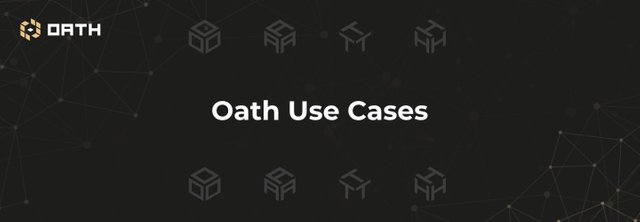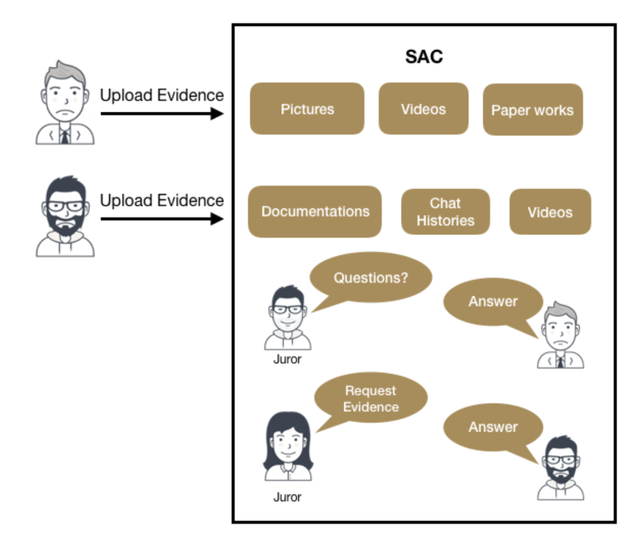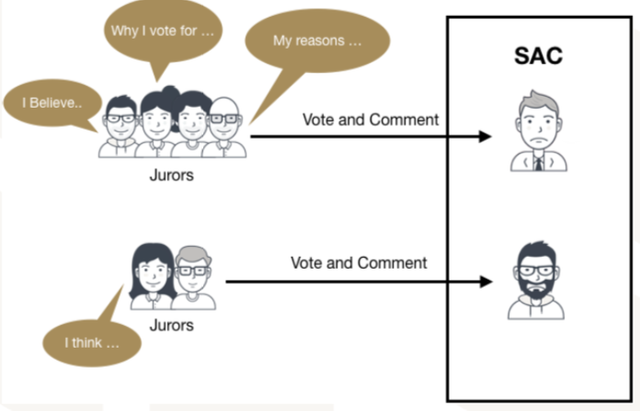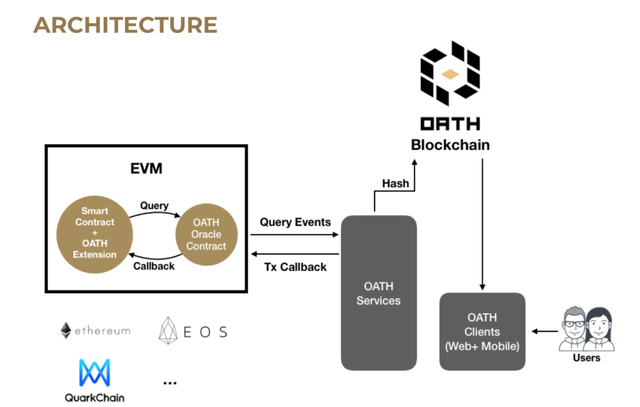
Oath will play a key role in our decentralized future, making chain and dApp users feel more secure by enabling a dispute resolution and governance mechanism on the blockchain.
In this post, we explore potential use cases in what we currently see as the biggest blockchain security concerns — and the biggest opportunities for Oath Protocol.
All applications discussed are for illustrative purposes.
Decentralized Dispute Resolution
P2P E-Commerce
Alice purchased a pre-owned luxury handbag from Bob on a peer-to-peer e-commerce platform. After receiving the handbag, Alice argues that the bag is not in “like new” condition and requests to return it. Bob claims that the photos provided on the platform clearly show the condition of the bag, which matches the provided description and refuses to refund.
The platform incorporates Oath Protocol, and the dispute resolution agreement contains the following conditions:
The dispute is decided by 21 jurors, with prevailing ratio set at 60%. If Bob prevails, the payment is automatically released to him; If Alice prevails, the payment is refunded to Alice once the item is returned.

Oath Protocol Basic User Flow
Once Alice initiates the dispute, a Smart Arbitration Case (SAC) is created automatically. Bob uploads photos, communication history with Alice, and a statement detailing the condition of the bag. Alice also uploads relevant evidence to the evidence pool.
Once the jury reviews the case, over 60% of the jurors side with Bob. OATH returns the result to the smart contract, which then automatically transfers the money to Bob. Jurors receive their award, and the case is closed.
News Verification (also applicable to any Content-Sharing Platform)
Early news reporting is often vague and conflicting, due to the lack of verified information and abundance of unverified rumors from multiple channels. OATH enables crowd-verification of the facts to restore the health and accuracy of news in the age of fake news and false rumors spread across the Internet.
To generate community interest in news verification, an interested party (e.g., a news publication) would initiate an SAC and deposit OATH tokens to reward evidence-collection and verification. OATH users then submit the facts and information they are aware of, and other users vote to confirm the veracity of submitted information.
Blockchain-based Insurance Coverage

Bob signed up with an insurance provider that uses OATH as a service provider for coverage determination.
To obtain an insurance payment, Bob, the insured, initiates an SAC for the insurance claim. He needs to upload all relevant information to support the claim, such as pictures, medical appointment confirmation, medical billing statement and diagnosis, and so on. The smart insurance contract contents are automatically added to the SAC evidence pool. Based on the contents of the contract and provided evidence, the jurors will vote to decide whether the insured’s claim is covered and he is entitled to the payment.
Decentralized Governance
In decentralized, autonomous organizations (DAOs), there is no central authority to resolve disputes or conflicts that arise. Decentralization distributes power and trust, and with that, it removes the need for central decision-making authority. Unfortunately, without proper incentives, distributed decision-making is plagued by low participation rate, unfair judging, and a sub-optimal verdict as result.
Case in Point 1: The DAO Hack & Ethereum Hard Fork
Due to a bug on the DAO smart contract, built on Ethereum, a hacker was able to steal USD $55MM worth of Ether raised during DAO’s crowdsale. Before the hacker was able to remove the funds, the Ethereum community and team regained control and placed the funds into a secured account. To refund the money to investors (including Vitalik Buterin), the community participated in a poll, which resulted in the Ethereum hard fork into ETC and ETH.

This raised several questions:
- Was the hard fork decision representative of entire community?
- Who voted, and how transparent was the voting procedure?
- Did those who were unaffected by the hack also vote?
- How much influence did Vitalik have in the forking decision?
Case in Point 2: EOS’s Unsuccessful Attempt at Blockchain Governance
EOS launched its highly anticipated mainnet on June 1, 2018. The governance and arbitration concerns have been raised before the launch within the EOS community, especially among the EOS block producers (BPs). Shortly after the launch, the EOS BPs had to freeze several wallets to prevent theft and secure funds due to a phishing attack. The EOS Constitution, a kind of “governance security patrol,” was not able to resolve this issue without a conflict of Interest. The EOS Alliance thus called the EOS Community Arbitration Forum (ECAF) into action to investigate new solutions for arbitration and governance — together with the Community.
Case in Point 3: Illegal Content on the Public Bitcoin Blockchain
In March 2018, mainstream news brought to light an allegation that illegal pornographic content was stored onthe Bitcoin blockchain. If true, this would mean that every node was part of illegal conduct by saving copies of that content on the blockchain. While the allegation was unsubstantiated, it raised the question of how we should manage illegal, controversial, or fake content shared on decentralized ledgers or p2p social media platforms.
OATH Solution
At Oath, we are building a mechanism to resolve the above problems by providing a decentralized jury for a decentralized economy.

Oaths’ technical architecture on public chains
We have already partnered with NEM and Quarkchain, and they will integrate Oath Protocol into their public chains to facilitate community governance. Oath Protocol will supply a fair and decentralized governance mechanism to support healthy growth of those public chains and effectively and efficiently address any malicious acts.
We have also partnered with U Network, a decentralized content-sharing peer-to-peer platform. Oath Protocol will facilitate community action in response to publication of any offensive or illegal content. Via Oath Protocol, users will be able to initiate and resolve disputes with content publishers to ensure decentralized and fair self-governance.
Through its elegance and flexibility, Oath Protocol has a wide range of use cases. As we see more and more DAOs and peer-to-peer systems evolve, the necessity for a standard governance solution will gain more importance and significance. Due to its algorithms and incentive mechanisms, Oath Protocol’s solution leads to higher participation rates, avoids malicious and biased jurors, and maintains a transparent and immutable record of all cases.
We encourage you to think about alternative uses and applications enabled by our protocol because the use cases we are most excited about are the ones we haven’t thought about yet!
Please note that the use cases referred to in this post remain potential use cases only, are provided for information and discussion only, and may not reflect the utility or functionality of Oath Protocol at launch — the success of any use cases will depend on how users and community participants expand and build out the Oath network before any potential use cases might come to fruition. Information in this post is provided on a non-promissory basis, should not be relied on or taken as advice in any form (including any form of investment advice), and may become incorrect or out of date.
Coins mentioned in post:
Downvoting a post can decrease pending rewards and make it less visible. Common reasons:
Submit